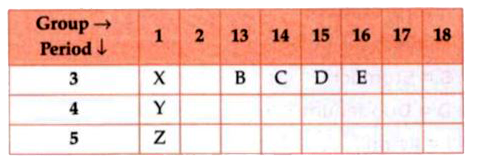Classically, an electron can be in any orbit around the nucleus of an atom. Then what determines the typical atomic size? Why is an atom not, say, thousand times bigger than its typical size? The question had greatly puzzled Bohr before he arrived at his famous model of the atom that you have learnt in the text. To simulate what he might well have done before his discovery, let us play as follows with the basic constants of nature and see if we can get a quantity with the dimensions of length that is roughly equal to the known size of an atom (~10–10m).
(a) Construct a quantity with the dimensions of length from the fundamental constants e, me, and c. Determine its numerical value.
(b) You will find that the length obtained in (a) is many orders of
magnitude smaller than the atomic dimensions. Further, it involves c. But energies of atoms are mostly in non-relativistic domain where c is not expected to play any role. This is what may have suggested Bohr to discard c and look for ‘something else’ to get the right atomic size. Now, the Planck’s constant h had already made its appearance elsewhere. Bohr’s great insight lay in recognising that h, me, and e will yield the right atomic size. Construct a quantity with the dimension of length from h, me, and e and confirm that its numerical value has indeed the correct order of magnitude.
(a) Using fundamental constants, e,me and c, we construct a quantity which has the dimenstions of length. This quantity is (e24π∈0mec2)
Now, e24π∈0mec2=(1.6×10−19)2×9×1099.1×10−31(3×108)2=2.82×10−15m
This is much smaller than the typical atomic size.
(b) However, when we drop c and use h,me and e to construct a quantity, which has dimensions of length, the quantity we obtain is 4π∈0(h/2π)2mee2
Now, 4π∈0(h/2π)2mee2=(6.6×10−34/2π)29×109×(9.1×10−31)(1.6×10−19)2≈0.53×10−10m
This is of the order of atomic sizes.
Related Playlists
- BOOK - PRADEEPCHAPTER - ATOMS AND NUCLEIEXERCISE - Additional Exercise question 61videos
ATOMS AND NUCLEI
- BOOK - PRADEEPCHAPTER - ATOMS AND NUCLEIEXERCISE - very short question 22videos
ATOMS AND NUCLEI
- BOOK - PRADEEPCHAPTER - ATOMS AND NUCLEIEXERCISE - Additional Exercise 11videos
ATOMS AND NUCLEI
- BOOK - PRADEEPCHAPTER - COMMUNICATION SYSTEMSEXERCISE - MODEL TEST PAPER-29videos
COMMUNICATION SYSTEMS
Similar Practice Problems
- Question 1 - Select One or More
An electron orbiting around the nucleus of an atom
Ahas a magnetic dipole momentBexerts an electric force on the nucleus equal to that on it by the nucleusCdoes produce a magnetic induction at the nucleusDhas a net energy inversely proportional to its distance from the nucleus. - Question 1 - Select One
Rutherford assumed in his atomic model that
Athe mass is concentrated at the center.Bcharge is concentrated at the center.Cboth the mass and charge are concentrated at the center.Delectrons are positively charged particles. - Question 1 - Select One
Bohr's model of an atom can explain
Aonly the spectrum of hydrogen atomBonly spectrum of an atom or ion containing one electronCspectrum of hydrogen moleculeDthe solar spectrum - Question 1 - Select One

Which of these elements have smallest atomic size?ABBCCDDE
Similar Questions
Classically, an electron can be in any orbit around the nucleus of an atom. Then what determines the typical atomic size? Why is an atom not, say, thousand times bigger than its typical size? The question had greatly puzzled Bohr before he arrived at his famous model of the atom that you have learnt in the text. To simulate what he might well have done before his discovery, let us play as follows with the basic constants of nature and see if we can get a quantity with the dimensions of length that is roughly equal to the known size of an atom (~10–10m).
(a) Construct a quantity with the dimensions of length from the fundamental constants e, me, and c. Determine its numerical value.
(b) You will find that the length obtained in (a) is many orders of magnitude smaller than the atomic dimensions. Further, it involves c. But energies of atoms are mostly in non-relativistic domain where c is not expected to play any role. This is what may have suggested Bohr to discard c and look for ‘something else’ to get the right atomic size. Now, the Planck’s constant h had already made its appearance elsewhere. Bohr’s great insight lay in recognising that h, me, and e will yield the right atomic size. Construct a quantity with the dimension of length from h, me, and e and confirm that its numerical value has indeed the correct order of magnitude.View SolutionHow many times is an atom bigger than the nucleus ?
View SolutionWhy do noble gases have bigger atomic size than halogens?
View SolutionThe atom having the smallest size.
View Solution
Which of these elements have smallest atomic size?View SolutionWhat are the postulates of Bohr's model of an atom?
View Solution

